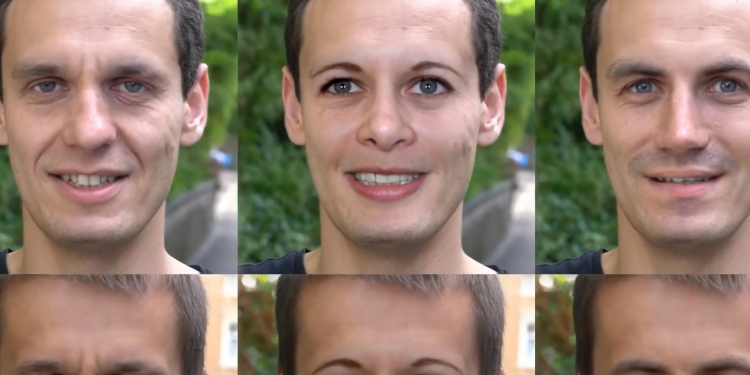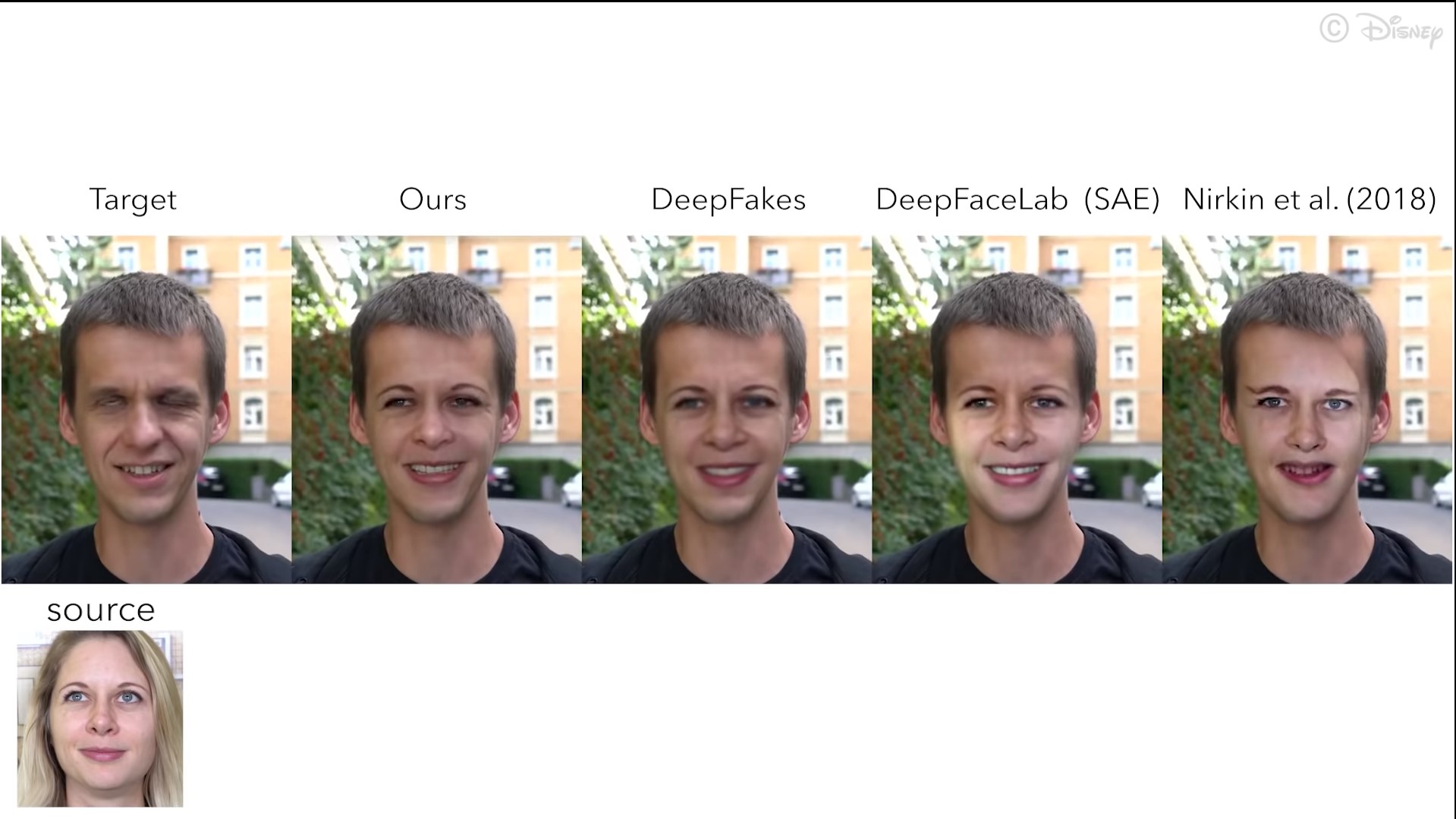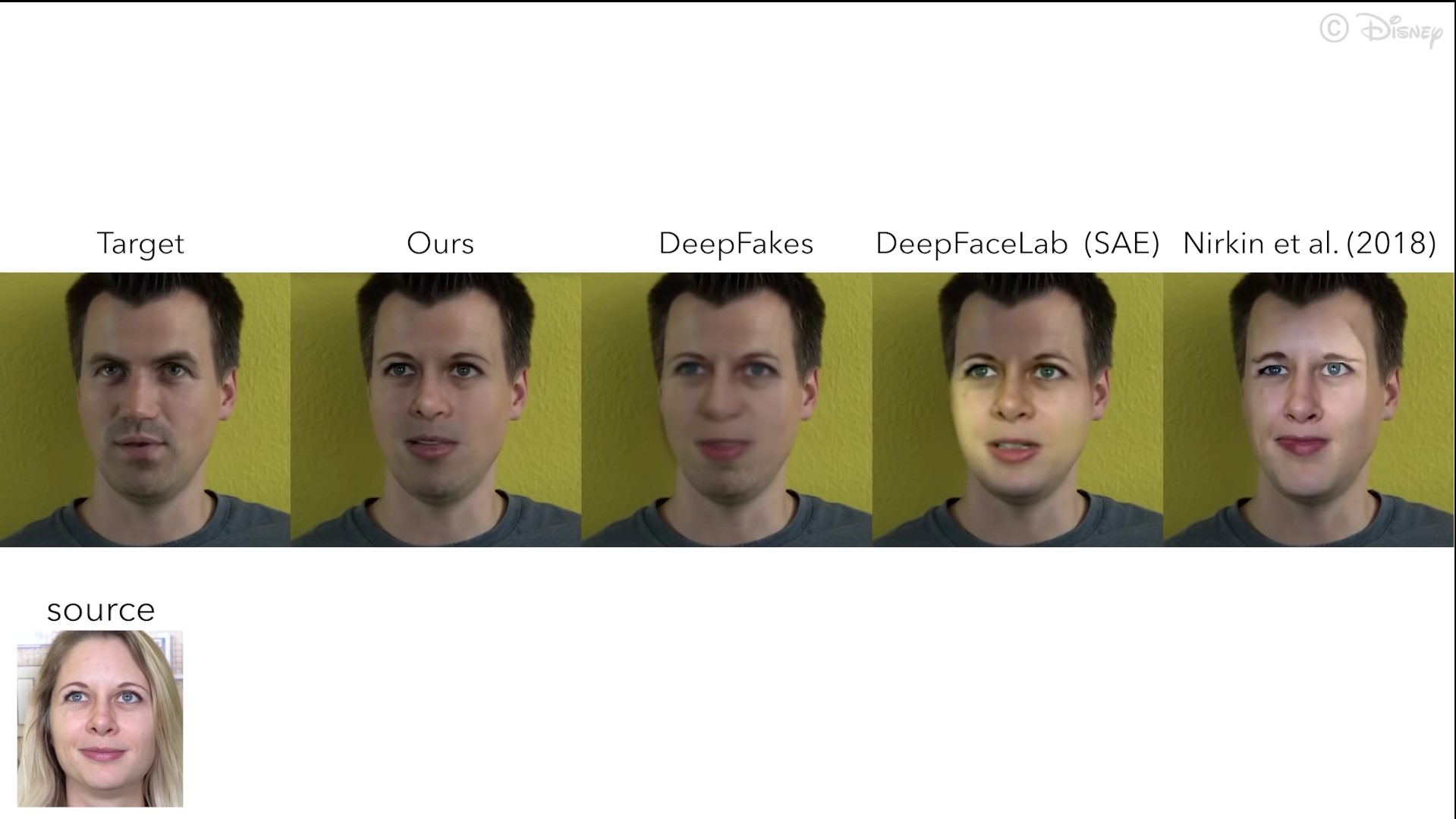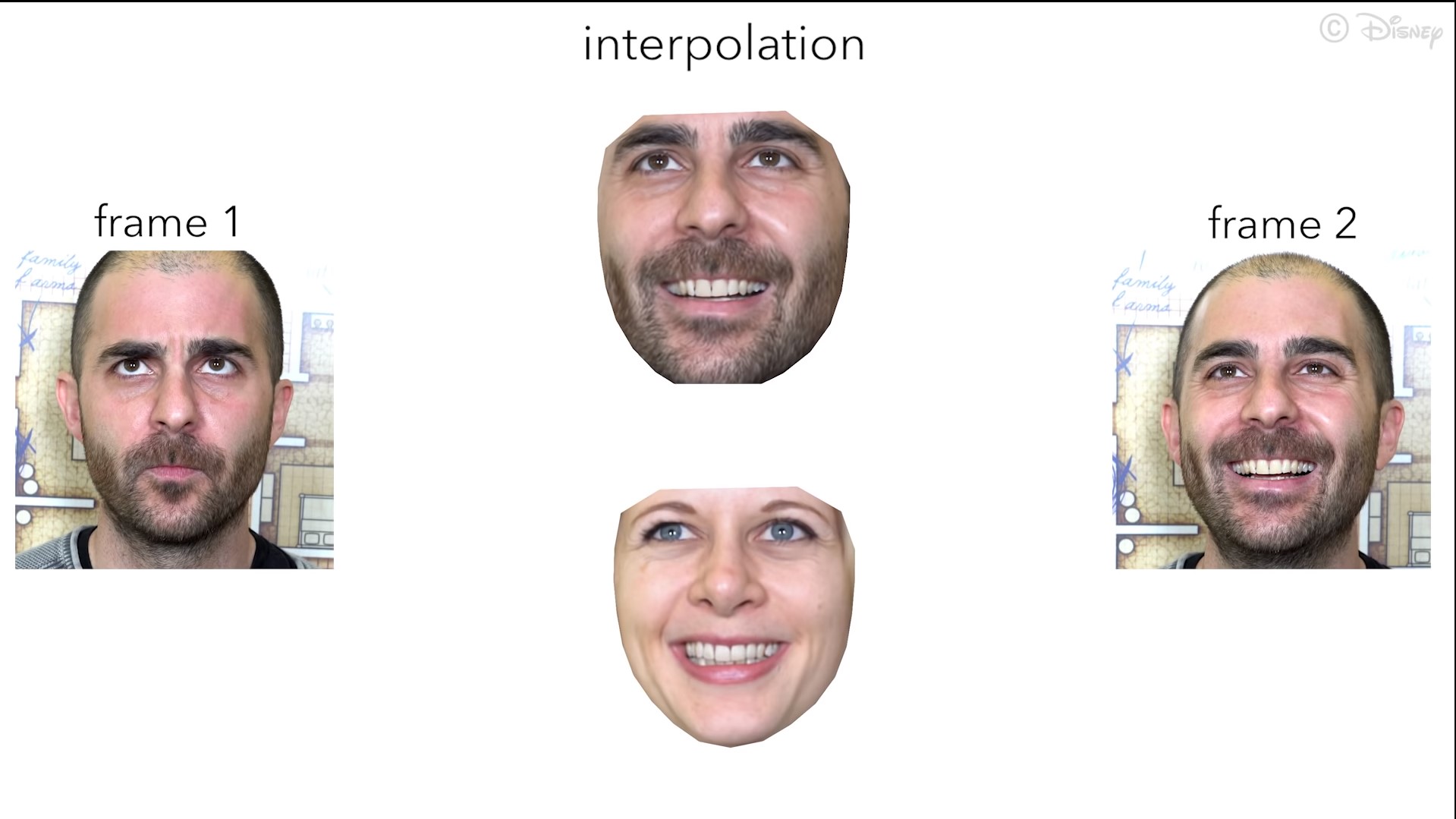Researchers from Disney Research Studios have demonstrated a new deepfake technology that has the potential to make it more widely adopted in the movie and TV industry. Disney presented a video demonstration and paper at a recent computer graphics conference, showing off what they claim is the first photo-realistic deepfake that can render results at megapixel resolution.
While that may sound technical but to put it simply, this new deepfake model by Disney can realistically swap faces and output them at higher resolution videos than previously seen before.
Disney’s researchers pointed out that open-source deepfake model DeepFakeLab were limited to outputting videos that were just 256 x 256 pixels in size. Using their new model, they can produce much higher quality 1024 x 1024 pixel resolution videos.
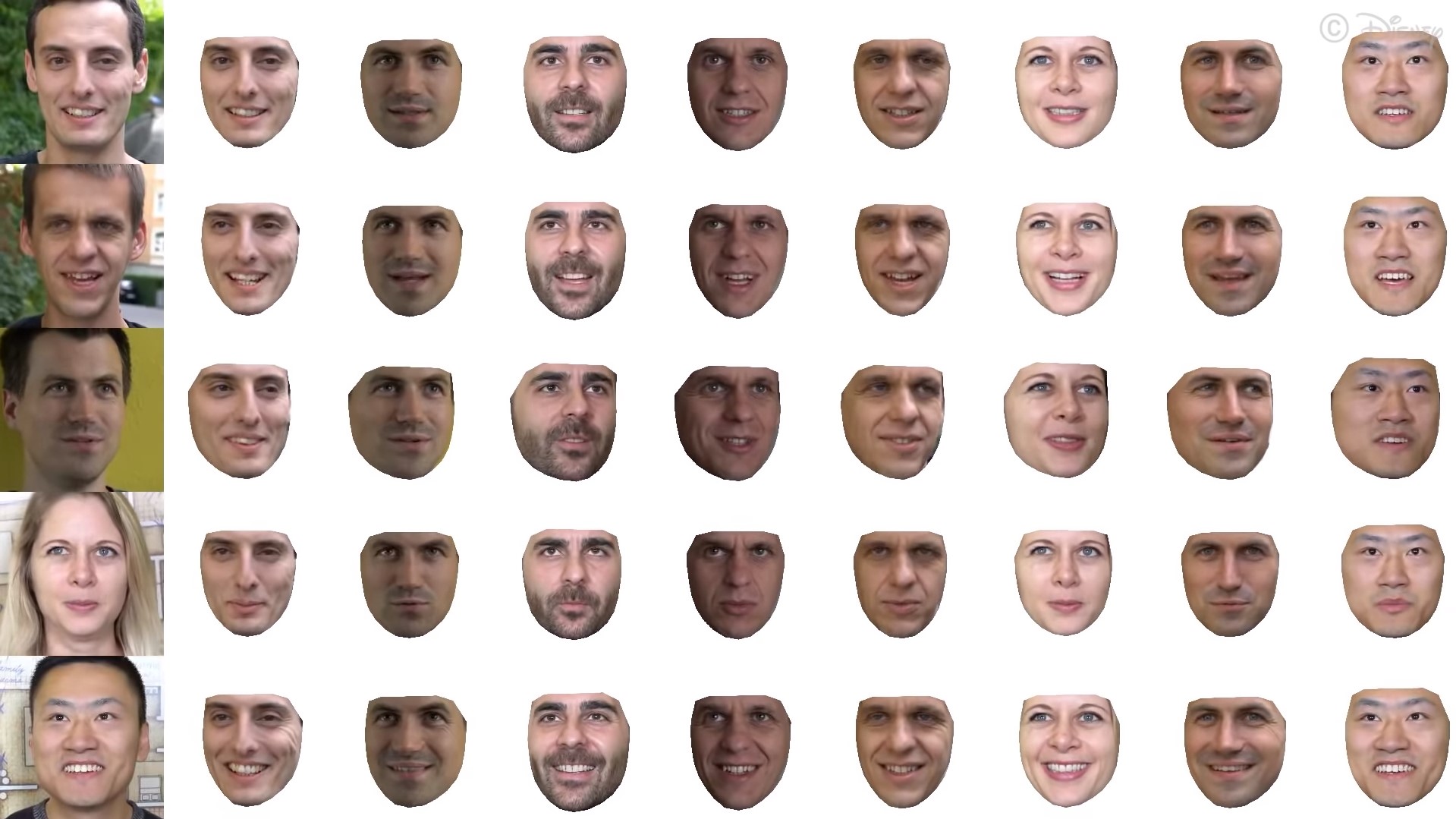
Besides that, the new method is unique in that it can swap any face with a recorded performance. It is so accurate that it can recreate the contrast and lighting conditions to match the deepfake face to a targeted scene convincingly.
This new method for swapping faces is eerily accurate and would improve the company’s ability to bring back dead actors in a realistic way. The House of Mouse has already done so in the recent Star Wars movie Rogue One, where deceased actors Peter Cushing and Carrie Fisher were brought back to replay their characters. The studio employed VFX techniques that referenced their previous performance and applied them to stand-in actors.
Here is a video by WIRED showing how Disney employed VFX to bring actor Peter Cushing back for one more performance.
While it could be argued how ethical it was for Disney to resurrect dead actors, the results were impressive nevertheless. But traditional VFX used in the above-mentioned movie is too expensive to produce and requires many months of work just to make several seconds of footage, said researchers.
Using deepfakes, by comparison, is not as time and resource intensive as conventional methods and can produce a video in a matter of hours.
According to Disney’s researcher, the potential applications for the technology goes beyond bringing back dead actors as it can also be used to make actors younger or older. In action sequences, deepfakes can be used to replace a stunt double’s face with the actual actor.
But while Disney’s intention for the technology is purely for commercial use, deepfake technology is often looked upon with suspicion as it has the potential to be misused.
Deepfake technology is better known for harming others rather than helping. A report by Vox points out how women are more likely to be hurt by the technology as their likeness is often used in non-consensual porn videos. There is also the fear that it can be used to impersonate political figures and sow even more misinformation during election campaigns.
Companies like Facebook are already bracing themselves for a future where deepfakes are ever-present in their social network. It launched the “Deepfake Detection Challenge” last year to develop an algorithm that can discern real videos from deepfakes.
Fortunately, Disney has open-sourced its research so that others can determine methods to flag and fight malicious use of the technology.
[SOURCE]

